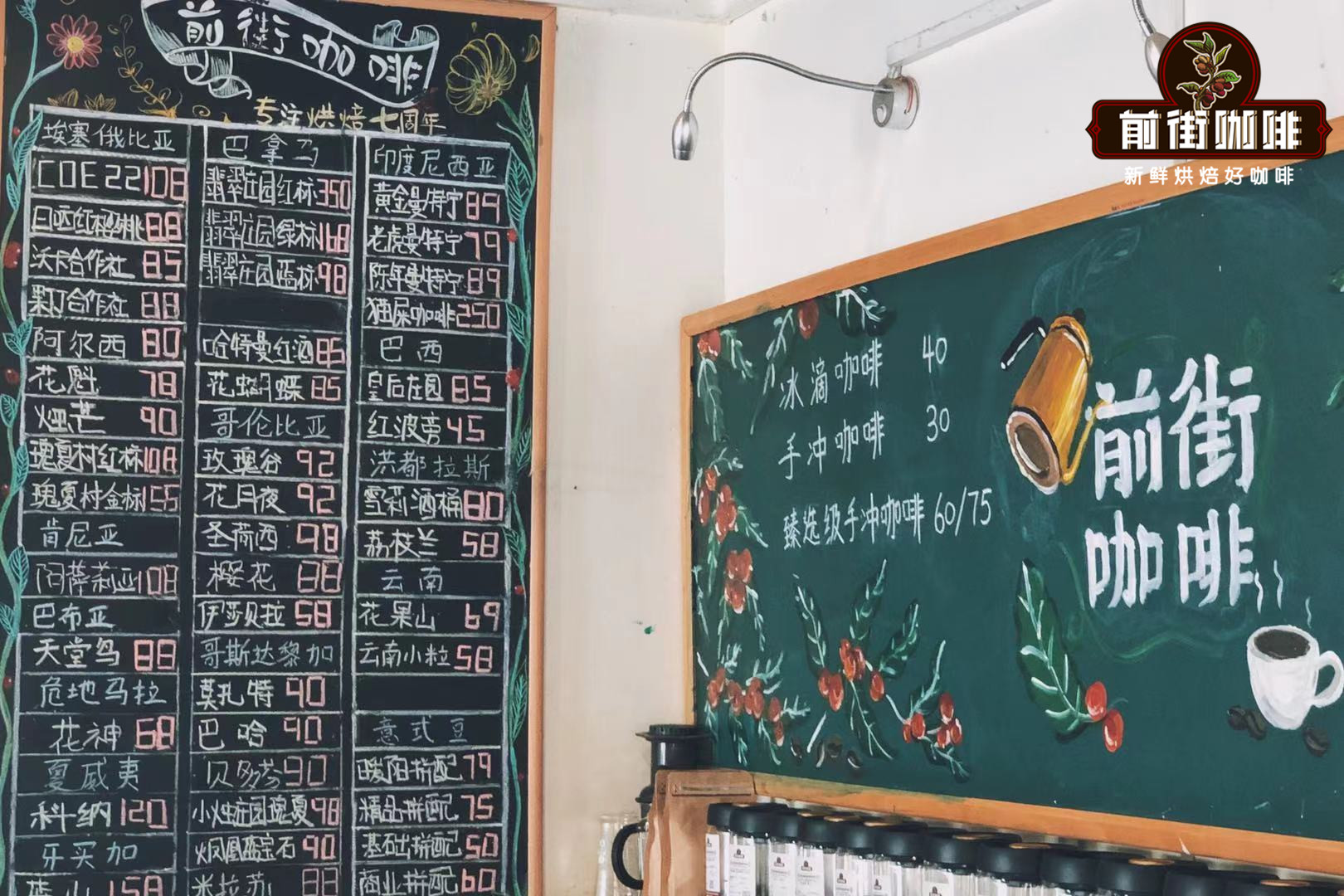Brief introduction of Ethiopian Jimamoca Coffee Bean Flavor Baking and brewing method in the producing area of Moka Coffee Bean

Professional coffee knowledge exchange more coffee bean information please follow the coffee workshop (Wechat official account cafe_style)
Name: Gima Mocha Coffee Mocha Djimmah G5
Country: Ethiopia Ethiopia
Production area: Djimmah
Grade: G5
Treatment: insolation
Variety: Arabica
When you first come to a cafe, if you don't know what to drink, it's probably not too bad to have a cup of mocha. Mocha is an old port in Yemen, specializing in exporting coffee from Yemen and Ethiopia to all parts of the world, so people are used to calling the coffee in these areas mocha coffee. Even though the port of Mocha has been abandoned due to sediment deposition, the names "Yemenmoka", "Harra Mocha" and "Ethiopia Biagima Moka" are still in use. In addition, although these producing areas have a wide variety, most of them have a similar taste of cocoa, so many people classify them as "mocha beans". Also because of the special cocoa flavor of mocha beans, it was later cited as "coffee seasoned with chocolate sauce (and milk)" as mocha coffee.
Djimmah is the largest producer of Ethiopian coffee beans, ranking first among the eight largest producing areas, about 3000 feet above sea level. Jima's coffee beans also belong to the small type, which is currently the most widely used species of mocha. there are many and miscellaneous coffee species, and most of the treatment methods in the harvest process are traditional sun treatment, so the appearance of raw coffee beans is not stable, but it is a good coffee with good quality and low price. Gimamoca has a unique taste of cocoa, slightly bitter but unique, soft and not strong on the palate, with special aromas of fruit and grass, medium to low acidity and a hint of red wine. The taste of medium and deep roasting is quite smooth, with a little but palatable bitterness, good taste, good consistency, good flavor with milk, cream or iced coffee.
The grading system of Ethiopia beans is not distinguished by size, but by production process and quality. G1 and G2 are reserved for water-washed beans, and G3, G4 and G5 are solarization. Because the defective rate of sun-dried beans is higher than that of water-washed beans, and the quality control efficiency of sun-dried beans is lower than that of water-washed beans, G4 and G5 are the main products. Sun beans are a traditional process according to the country, which is directly dried by the whole coffee fruit. in the process of sun drying, the slightly fermented aroma of the pulp seeps into the coffee beans. When the beans are well roasted, they taste rich and fruity. If the quality is poor, the miscellaneous flavor will outweigh the fruit aroma. Washing beans is to remove the pulp first and then go into the pool to wash and ferment, so there is no fruit aroma but good acid quality, each has its own preferences. G5 is a wild forest coffee in Ethiopia, so it is mixed, but it is a concentrated global coffee flavor spectrum, often with surprises, which is a pleasure that other coffee producing areas do not have.
Mocha coffee cup test
Fragrance: chocolate, peanut powder, almond
Aroma: peppermint, Herb juice, wood flavor, Shenpei tea
Flavor: slightly bitter citrus with sour wine, greasy, sweet aftertaste, obvious cocoa chocolate flavor
Mocha coffee is suitable for roasting: 6 optional roasting degree 3 ~ 8
Important Notice :
前街咖啡 FrontStreet Coffee has moved to new addredd:
FrontStreet Coffee Address: 315,Donghua East Road,GuangZhou
Tel:020 38364473
- Prev

The difference of Flavor and taste between Indonesian Mantenin and PWN Gold Mantenin Coffee and suggestions for hand-brewing
Professional coffee knowledge exchange more coffee bean information please follow the coffee workshop (Wechat official account cafe_style) what are the characteristics of manning coffee? Manning coffee is produced in Sumatra, Indonesia, Asia, also known as Sumatran coffee. Her flavor is very rich, fragrant, bitter, mellow, with a little sweetness. In general, coffee lovers mostly drink individual products, but they are also blended.
- Next

Manning Coffee treatment method what are the characteristics of manning coffee? is manning coffee good?
More information on coffee beans Please follow the coffee workshop (official Wechat account cafe_style) the appearance of Mandarin coffee beans can be said to be the ugliest, but coffee fans say that the ugliest Sumatran coffee beans are, the better, mellow and slippery they are. Manning coffee is considered to be the richest coffee in the world. When tasting manning, you can taste it on the tip of your tongue.
Related
- Detailed explanation of Jadeite planting Land in Panamanian Jadeite Manor introduction to the grading system of Jadeite competitive bidding, Red bid, Green bid and Rose Summer
- Story of Coffee planting in Brenka region of Costa Rica Stonehenge Manor anaerobic heavy honey treatment of flavor mouth
- What's on the barrel of Blue Mountain Coffee beans?
- Can American coffee also pull flowers? How to use hot American style to pull out a good-looking pattern?
- Can you make a cold extract with coffee beans? What is the right proportion for cold-extracted coffee formula?
- Indonesian PWN Gold Mandrine Coffee Origin Features Flavor How to Chong? Mandolin coffee is American.
- A brief introduction to the flavor characteristics of Brazilian yellow bourbon coffee beans
- What is the effect of different water quality on the flavor of cold-extracted coffee? What kind of water is best for brewing coffee?
- Why do you think of Rose Summer whenever you mention Panamanian coffee?
- Introduction to the characteristics of authentic blue mountain coffee bean producing areas? What is the CIB Coffee Authority in Jamaica?

